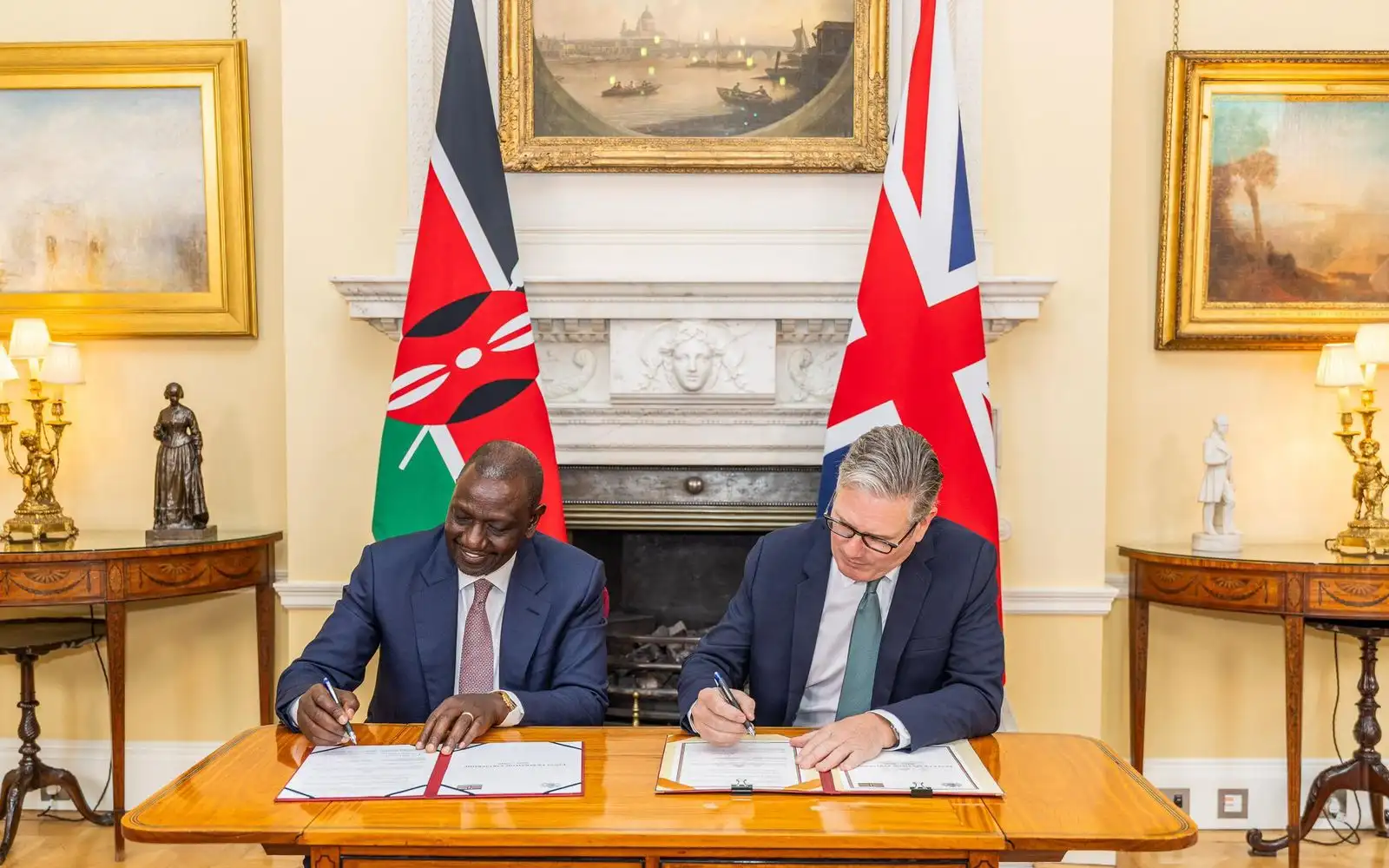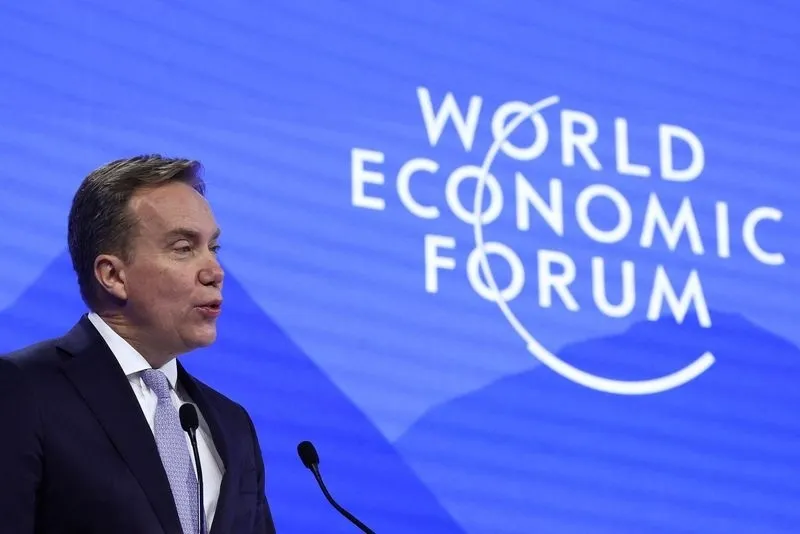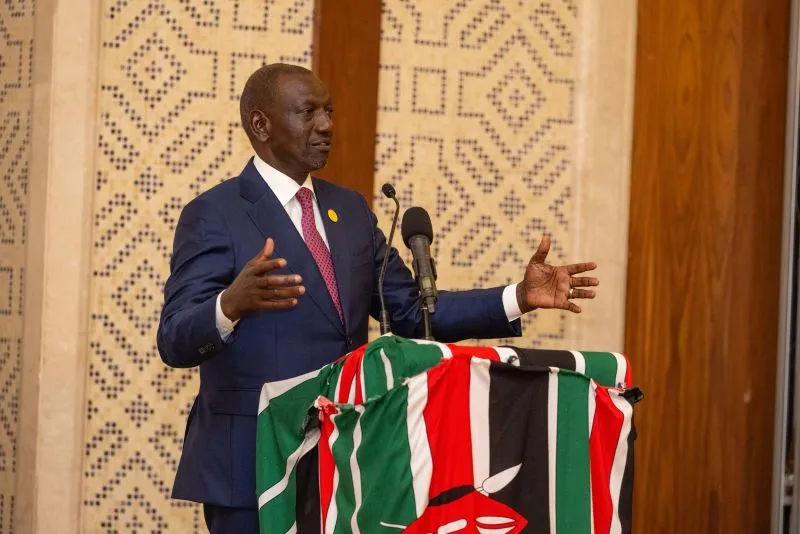Zambia National Commercial Bank (Zanaco), the country’s largest financial institution by asset base, is set to make history by issuing the nation’s first sustainability bond, targeting $100 million to fund environmental and social projects across the southern African nation. The announcement, made by CEO Mukwandi Chibesakunda at a press briefing in Lusaka on Friday, October 31, 2025, marks a watershed moment for Zambia’s capital markets and positions the country at the forefront of sustainable finance innovation in the region.
The groundbreaking issuance comes at a critical juncture for Africa’s climate financing landscape, where the continent accounts for less than 1% of the global $2.2 trillion green bond market, according to data from the Africa Policy Research Institute. This stark disparity underscores the urgent need for innovative financing mechanisms to bridge the massive climate funding gap facing African nations, particularly as they grapple with the dual challenges of economic development and environmental sustainability.
Build the future you deserve. Get started with our top-tier Online courses: ACCA, HESI A2, ATI TEAS 7, HESI EXIT, NCLEX-RN, NCLEX-PN, and Financial Literacy. Let Serrari Ed guide your path to success. Enroll today.
A Two-Tranche Approach to Market Entry
Zanaco’s strategic approach to entering the sustainability bond market reflects both ambition and prudence. The bank plans to structure the $100 million issuance in two distinct tranches, beginning with a $50 million private placement expected to close within six months. This initial phase will target institutional investors and high-net-worth individuals who have already expressed interest in supporting Zambia’s transition to a greener economy. The second tranche, comprising another $50 million, will be offered to the public following the successful completion of the private placement, potentially democratizing access to sustainable investment opportunities for retail investors across Zambia.
Chibesakunda revealed that the bank is currently engaged in advanced negotiations with several private investors, though she refrained from disclosing their identities pending the finalization of agreements. Market sources suggest that potential investors include development finance institutions, international pension funds with ESG mandates, and regional institutional investors seeking to diversify their portfolios while contributing to sustainable development objectives.
The phased approach allows Zanaco to test market appetite while building momentum for the public offering. This strategy mirrors successful sustainability bond issuances in other emerging markets, where initial private placements have helped establish pricing benchmarks and generate market confidence before broader public participation.
Alignment with National Climate Strategies
The sustainability bond issuance aligns strategically with Zambia’s Green Growth Strategy (2024-2030) and the recently enacted Climate Change Act, positioning Zanaco as a key enabler of the country’s environmental objectives. The funds raised will be channeled into three primary sectors that are critical to Zambia’s sustainable development agenda: renewable energy infrastructure, sustainable agriculture practices, and climate-resilient infrastructure development.
In the renewable energy sector, Zambia has significant untapped potential, particularly in solar and hydroelectric power generation. The country currently relies heavily on hydropower for its electricity generation, but climate change-induced droughts have exposed the vulnerability of this dependence. Zanaco’s sustainability bond proceeds could help finance diversification into solar farms, mini-grids for rural electrification, and energy storage solutions that enhance grid stability and reliability.
Sustainable agriculture represents another crucial area for investment, particularly given that agriculture accounts for approximately 20% of Zambia’s GDP and employs more than 60% of the population. The Food and Agriculture Organization has identified climate-smart agriculture as essential for ensuring food security while reducing the sector’s environmental footprint. Potential projects could include financing for drought-resistant crop varieties, precision agriculture technologies, sustainable irrigation systems, and value chain infrastructure that reduces post-harvest losses.
Climate-resilient infrastructure development addresses the urgent need to adapt existing infrastructure and build new facilities capable of withstanding extreme weather events. The World Bank estimates that Zambia loses approximately 0.4% of its GDP annually due to climate-related disasters, highlighting the economic imperative of investing in resilient infrastructure. This could encompass flood-resistant road networks, climate-adapted urban drainage systems, and resilient water supply infrastructure.
Addressing Africa’s Climate Financing Gap
The timing of Zanaco’s sustainability bond is particularly significant given the enormous climate financing gap facing African nations. According to World Bank calculations, Africa requires approximately $2.8 trillion by 2030 to implement its Nationally Determined Contributions (NDCs) under the 2015 Paris Agreement. These NDCs represent each country’s commitment to reducing greenhouse gas emissions and adapting to climate change impacts.
However, current climate-related budgets and donor pledges fall far short of these requirements. The African Development Bank reports that Africa receives only about $30 billion annually in climate finance, representing less than 3% of global climate finance flows despite the continent being home to 17% of the world’s population and being disproportionately affected by climate change impacts.
This financing shortfall has prompted African financial institutions to explore innovative funding mechanisms beyond traditional donor support and government budgets. Sustainability bonds, along with other thematic bonds such as green bonds and social bonds, have emerged as promising instruments for mobilizing private capital toward climate and development objectives. The Climate Bonds Initiative reports that African green bond issuances reached $4.7 billion in 2024, a significant increase from previous years but still a fraction of the continent’s needs.
Zanaco’s Market Position and Credibility
As Zambia’s largest bank with assets exceeding $2 billion and a network of over 70 branches nationwide, Zanaco brings considerable credibility to this pioneering transaction. The bank’s strong market position, combined with its track record of innovation in financial services, positions it well to successfully execute this landmark issuance. Zanaco has previously demonstrated its commitment to sustainable finance through various initiatives, including SME financing programs that support green businesses and agricultural lending products that promote sustainable farming practices.
The bank’s decision to issue a sustainability bond rather than a pure green bond reflects a holistic approach to sustainable development that recognizes the interconnection between environmental and social challenges. This broader mandate allows for greater flexibility in project selection while ensuring that investments deliver measurable positive impacts across multiple dimensions of sustainability.
Chibesakunda emphasized that the bond issuance represents “a promise to channel resources into projects that safeguard the environment and uplift communities,” framing it as both a financial innovation and a social commitment. This dual emphasis on environmental protection and community development resonates with the United Nations Sustainable Development Goals, particularly SDG 7 (Affordable and Clean Energy), SDG 9 (Industry, Innovation and Infrastructure), and SDG 13 (Climate Action).
Regional Context and Peer Comparisons
Zanaco’s sustainability bond places Zambia among a growing cohort of African nations embracing sustainable finance instruments. Nigeria issued its first sovereign green bond in 2017, raising ₦82.7 billion ($200 million) for solar power projects and afforestation programs. South Africa’s Johannesburg Stock Exchange has established itself as a regional hub for green bond listings, with over 40 green bonds listed as of 2024.
In East Africa, Kenya has emerged as a leader in sustainable finance, with several banks and corporates issuing green bonds to fund renewable energy and real estate projects. The Central Bank of Kenya has also developed comprehensive green finance guidelines that provide a regulatory framework for sustainable financial products.
These regional precedents provide valuable lessons for Zambia’s entry into the sustainability bond market. Key success factors identified across these markets include strong regulatory support, transparent use of proceeds frameworks, regular impact reporting, and the involvement of international development partners in structuring and credit enhancement.
Regulatory Framework and Market Infrastructure
The success of Zanaco’s sustainability bond will depend significantly on the supportive regulatory environment established by Zambian authorities. The Securities and Exchange Commission of Zambia has been working to develop guidelines for sustainable finance instruments, drawing on international best practices while adapting them to local market conditions.
The Lusaka Securities Exchange (LuSE) has also been preparing to accommodate green and sustainability bonds, including developing listing requirements and disclosure standards that align with international frameworks such as the International Capital Market Association’s Green Bond Principles and Sustainability Bond Guidelines.
The Bank of Zambia, as the country’s central bank, has indicated its support for sustainable finance initiatives as part of its broader mandate to ensure financial system stability while supporting economic development. This regulatory alignment creates an enabling environment for Zanaco’s pioneering transaction and potentially paves the way for other issuers to follow suit.
One decision can change your entire career. Take that step with our Online courses in ACCA, HESI A2, ATI TEAS 7, HESI EXIT, NCLEX-RN, NCLEX-PN, and Financial Literacy. Join Serrari Ed and start building your brighter future today.
Impact Measurement and Reporting
A critical component of Zanaco’s sustainability bond framework will be the establishment of robust impact measurement and reporting mechanisms. International investors increasingly demand transparent and verifiable data on the environmental and social impacts of their investments. Zanaco has committed to implementing a comprehensive monitoring and evaluation system that tracks key performance indicators across funded projects.
These indicators might include megawatts of renewable energy capacity installed, hectares of land under sustainable agriculture practices, number of households with improved access to clean water, and tons of CO2 emissions avoided. Regular impact reports, likely to be published annually, will provide stakeholders with detailed information on how bond proceeds are being utilized and the tangible benefits being delivered.
The bank is expected to engage independent third parties to verify its sustainability framework and provide annual assurance on the use of proceeds and impact metrics. This external validation is crucial for maintaining investor confidence and ensuring the credibility of Zambia’s nascent sustainable finance market.
Economic Implications and Development Impact
The successful issuance of Zambia’s first sustainability bond could have far-reaching implications for the country’s economic development trajectory. By demonstrating that sustainable projects can attract commercial financing at scale, the transaction could catalyze a shift in how development projects are funded, reducing reliance on traditional donor funding and government budgets.
The multiplier effects of the investments funded by the bond proceeds could be substantial. Renewable energy projects, for instance, could reduce electricity costs for businesses and households while improving energy security. Sustainable agriculture investments could enhance food security, increase farmer incomes, and reduce rural poverty. Climate-resilient infrastructure could minimize economic losses from extreme weather events while improving connectivity and market access.
Moreover, the development of a local sustainable finance market could position Zambia as a regional financial hub for green investments, attracting international capital and expertise. This could create new employment opportunities in green industries, technology transfer, and capacity building in sustainable development practices.
Challenges and Risk Factors
Despite the promising prospects, Zanaco’s sustainability bond faces several challenges that could impact its success. Currency risk remains a significant concern for international investors, particularly given the Zambian kwacha’s historical volatility. The bank will need to carefully structure the bond to mitigate currency risks, possibly through partial guarantees or currency hedging mechanisms.
Project execution risk is another critical factor, as the success of the bond ultimately depends on the effective implementation of funded projects. This requires strong project management capabilities, transparent procurement processes, and effective coordination with various stakeholders including government agencies, communities, and technical partners.
The relatively nascent state of Zambia’s capital markets could also pose liquidity challenges, particularly for the publicly offered tranche. Developing a secondary market for the sustainability bond will be crucial for attracting institutional investors who require liquidity for their investments.
International Support and Technical Assistance
International development partners are expected to play a crucial supportive role in Zanaco’s sustainability bond issuance. Organizations such as the International Finance Corporation (IFC), the African Development Bank, and bilateral development agencies have extensive experience in structuring and supporting sustainable finance transactions in emerging markets.
These partners could provide technical assistance in areas such as project identification and appraisal, environmental and social safeguards, impact measurement frameworks, and investor relations. They might also offer credit enhancement mechanisms such as partial guarantees that could improve the bond’s credit rating and attract a broader investor base.
The involvement of reputable international partners would also send a strong signal to global investors about the credibility and quality of Zanaco’s sustainability bond, potentially reducing the risk premium and lowering the overall cost of capital.
Future Outlook and Market Development
Looking ahead, Zanaco’s sustainability bond could be the first of many such issuances in Zambia and the broader Southern African region. If successful, it could encourage other banks, corporations, and even the government to tap into the sustainable finance market. The development of a pipeline of sustainability bonds would deepen Zambia’s capital markets, improve price discovery, and create a more diverse investment landscape.
The transaction also comes at a time when global investors are increasingly integrating environmental, social, and governance (ESG) factors into their investment decisions. With trillions of dollars in global assets under management now subject to ESG mandates, African issuers that can demonstrate strong sustainability credentials could access this vast pool of capital.
For Zambia specifically, the development of a sustainable finance market could support the country’s ambitions to become a middle-income nation by 2030 while ensuring that economic growth does not come at the expense of environmental degradation or social inequality.
Conclusion
Zanaco’s $100 million sustainability bond represents more than just a financial transaction; it symbolizes Zambia’s commitment to sustainable development and its emergence as an innovator in African financial markets. By successfully executing this pioneering issuance, Zanaco could unlock new sources of capital for critical development projects while establishing Zambia as a credible destination for sustainable investments.
The success of this initiative will depend on multiple factors, including strong execution, transparent governance, measurable impact, and continued support from regulators and development partners. If these elements align, Zanaco’s sustainability bond could catalyze a transformation in how Zambia and other African nations finance their sustainable development objectives, moving from aid dependency toward market-based solutions that deliver both financial returns and positive environmental and social impacts.
As CEO Chibesakunda noted, this represents “a milestone for Zambia’s capital markets,” one that could reshape the country’s development finance landscape for years to come. The eyes of regional and international markets will be watching closely as Zambia embarks on this groundbreaking journey into sustainable finance.
Ready to take your career to the next level? Join our Online courses: ACCA, HESI A2, ATI TEAS 7 , HESI EXIT , NCLEX – RN and NCLEX – PN, Financial Literacy!🌟 Dive into a world of opportunities and empower yourself for success. Explore more at Serrari Ed and start your exciting journey today! ✨
Track GDP, Inflation and Central Bank rates for top African markets with Serrari’s comparator tool.
See today’s Treasury bonds and Money market funds movement across financial service providers in Kenya, using Serrari’s comparator tools.
photo source: Google
By: Montel Kamau
Serrari Financial Analyst
5th November, 2025
Article, Financial and News Disclaimer
The Value of a Financial Advisor
While this article offers valuable insights, it is essential to recognize that personal finance can be highly complex and unique to each individual. A financial advisor provides professional expertise and personalized guidance to help you make well-informed decisions tailored to your specific circumstances and goals.
Beyond offering knowledge, a financial advisor serves as a trusted partner to help you stay disciplined, avoid common pitfalls, and remain focused on your long-term objectives. Their perspective and experience can complement your own efforts, enhancing your financial well-being and ensuring a more confident approach to managing your finances.
Disclaimer: This article is for informational purposes only and does not constitute financial advice. Readers are encouraged to consult a licensed financial advisor to obtain guidance specific to their financial situation.
Article and News Disclaimer
The information provided on www.serrarigroup.com is for general informational purposes only. While we strive to keep the information up to date and accurate, we make no representations or warranties of any kind, express or implied, about the completeness, accuracy, reliability, suitability, or availability with respect to the website or the information, products, services, or related graphics contained on the website for any purpose. Any reliance you place on such information is therefore strictly at your own risk.
www.serrarigroup.com is not responsible for any errors or omissions, or for the results obtained from the use of this information. All information on the website is provided on an as-is basis, with no guarantee of completeness, accuracy, timeliness, or of the results obtained from the use of this information, and without warranty of any kind, express or implied, including but not limited to warranties of performance, merchantability, and fitness for a particular purpose.
In no event will www.serrarigroup.com be liable to you or anyone else for any decision made or action taken in reliance on the information provided on the website or for any consequential, special, or similar damages, even if advised of the possibility of such damages.
The articles, news, and information presented on www.serrarigroup.com reflect the opinions of the respective authors and contributors and do not necessarily represent the views of the website or its management. Any views or opinions expressed are solely those of the individual authors and do not represent the website's views or opinions as a whole.
The content on www.serrarigroup.com may include links to external websites, which are provided for convenience and informational purposes only. We have no control over the nature, content, and availability of those sites. The inclusion of any links does not necessarily imply a recommendation or endorsement of the views expressed within them.
Every effort is made to keep the website up and running smoothly. However, www.serrarigroup.com takes no responsibility for, and will not be liable for, the website being temporarily unavailable due to technical issues beyond our control.
Please note that laws, regulations, and information can change rapidly, and we advise you to conduct further research and seek professional advice when necessary.
By using www.serrarigroup.com, you agree to this disclaimer and its terms. If you do not agree with this disclaimer, please do not use the website.
www.serrarigroup.com, reserves the right to update, modify, or remove any part of this disclaimer without prior notice. It is your responsibility to review this disclaimer periodically for changes.
Serrari Group 2025












